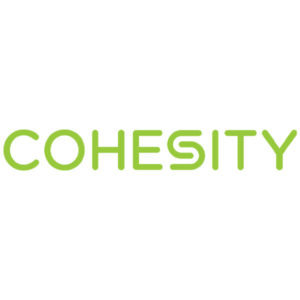Build Day Live! Educating Your Enterprise
![picture2-1555105142615[1] picture2-1555105142615[1]](https://builddaylive.com/wp-content/uploads/2019/05/picture2-15551051426151-1024x255-500x300.png)
Terraform Provider for HPE OneSphere
In this article I will show you the basics of how HPE OneSphere Terraform provider can used to interact with the HPE Hybrid Cloud management Platform. Why Terraform? HashiCorp Terraform is a powerful infrastructure orchestration tool used to create, manage, and update infrastructure resources. These resources may be physical machines, VMs, network switches, containers, or others. Almost any infrastructure type can be represented as a resource in Terraform. HashiCorp Terraform manages existing and popular service provider platforms, as well as custom in-house solutions. Service providers, such as those delivering IaaS, PaaS, or SaaS (e.g. HPE OneSphere) capabilities, are responsible for understanding the API interactions and exposing the appropriate resources. HPE OneSphere Provider HPE OneSphere is a software-as-a-service (SaaS) hybrid cloud management platform that helps you build clouds, deploy apps, and gain insights faster. Providers using HashiCorp Terraform are responsible for the lifecycle of a resource: create, read, update, delete. HPE OneSphere […]

Replicating Cohesity views (file shares) to the cloud and between clouds
The ability to re-use your data in different locations is key to unlocking value from that data. Michael Letschin shows us how easy it is to replicate from an on-premises Cohesity cluster to a Cohesity cluster on Azure and then make a copy of a Cohesity View available in Azure. The same function is available regardless of the cluster location, on-premises, Azure, GCP, or AWS.

Deploying Cohesity Cloud Edition to AWS
Deploying a full Cohesity cluster into your AWS cloud account is a simple process automated through the Helios console. Chris Colotti shows us the three step wizard in Helios and the initial cluster setup of the AWS based cluster.
How VM data is managed within an HPE SimpliVity cluster, Part 4: Automatic capacity management
This blog is the fourth in a 5-part series on VM data storage and management within HPE SimpliVity powered by Intel®. The customers I talk to find HPE SimpliVity hyperconverged infrastructure extremely simple to use. They are savvy enough to know that that’s because there’s a lot going on behind the scenes, and they are technical enough to be curious about how it all works. Discovering the architectural ins and outs, and learning how data in a virtual machine is stored and managed in an HPE SimpliVity cluster can lead you to a better understanding of how data is consumed in your specific HPE SimpliVity environment, and how you can best manage it. If you have been following this blog series, you know that I’m exploring HPE SimpliVity architecture at a detailed level, to help IT administrators understand VM data storage and management in HPE hyperconverged clusters. Part 1 covered virtual machine storage and management […]
About Build Day Live!
Build Day Live! focuses on showing people how your product will fit in their data center. It is – in so many words – an alternate source material and marketing product. We do Day 1 Installation into an infrastructure, and go over the pros and cons with your leading engineers, support, and more.
Build Day Live! also gets a deeper insight into the company, finding out why this product exists, and how it can benefit the company 5, 10, or more years down the road.
Our Services

Build Day Live!
a live data center.

CTO Advisor
talks to Execs

AMA
session to gain insight

Social Networing

Internal Videos

Gorilla Guide
promotional use

Blog Posts
The Build Day Live! Crew

Alastair Cook

Jeffrey Powers
-
To give Enterprise IT an alternate place to start when deciding what to add to their Data Center. Build Day Live is a Day one approach to install, using the top experts of the company.

![8cJlALA3_400x400[1] Datrium](https://builddaylive.com/wp-content/uploads/2018/06/8cJlALA3_400x4001-300x300.jpg)
![logo[1] HPE](https://builddaylive.com/wp-content/uploads/2018/06/logo1-1024x1024-300x300.jpg)
![w-Xsz04h_400x400[1] Oracle Ravello](https://builddaylive.com/wp-content/uploads/2018/06/w-Xsz04h_400x4001-300x300.jpg)
![DUeOBLhV4AE9ZyV[1] Pure Storage](https://builddaylive.com/wp-content/uploads/2018/06/DUeOBLhV4AE9ZyV1-300x300.jpg)

![1095123[1] NetApp](https://builddaylive.com/wp-content/uploads/2020/01/10951231-300x300.png)